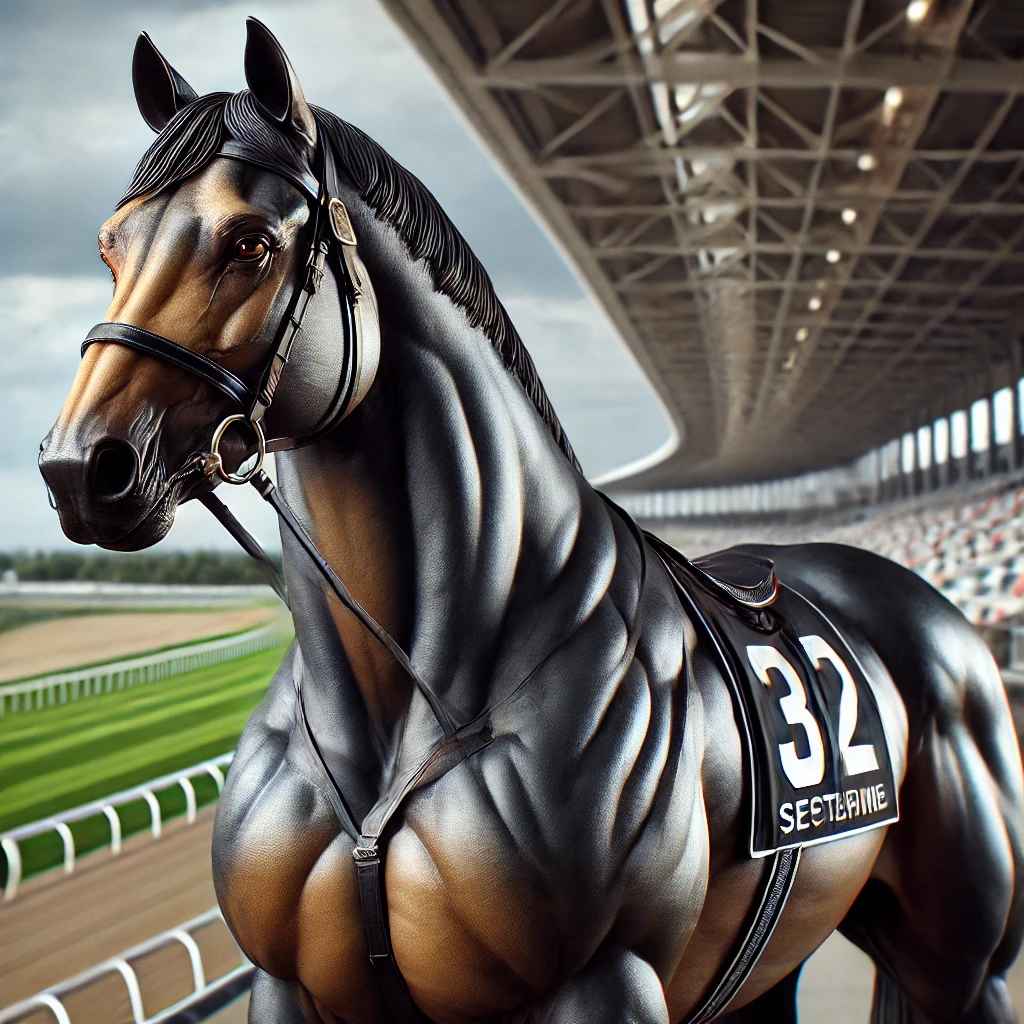A well-balanced nutritional regimen is essential for keeping racehorses in peak physical condition, supporting optimal performance, and reducing injury risk.
A racehorse’s dietary needs are complex, as they must meet energy demands while maintaining digestive health. Below, we’ll explore the core components of a nutritional regimen tailored for racehorses, focusing on energy sources, hydration, supplements, and essential feeding practices.
1. High-Quality Forage as the Dietary Foundation
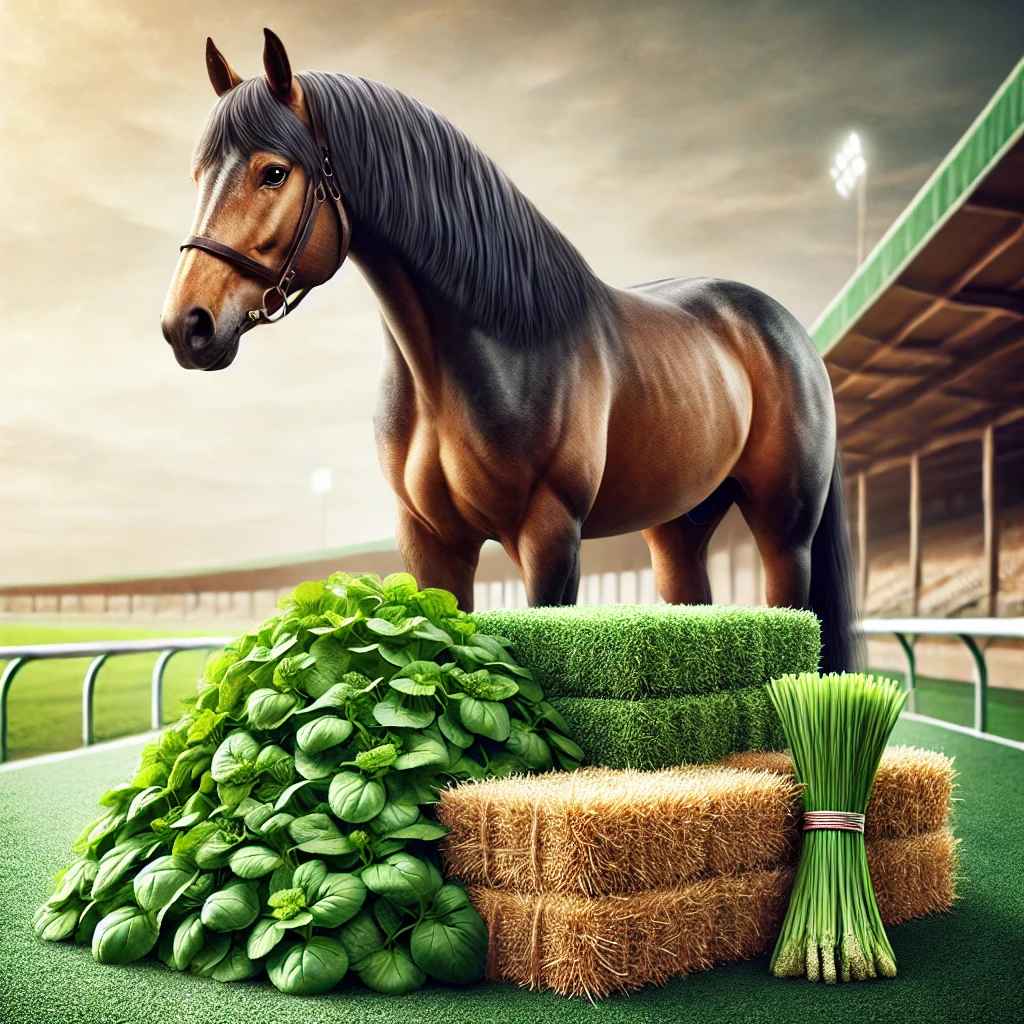
Forage, like hay or pasture, is the cornerstone of any horse’s diet, including racehorses. This provides fiber for gut health, encourages normal chewing behavior, and reduces stress. Racehorses typically consume a mix of legume (like alfalfa) and grass hay for a balanced intake of protein and minerals.
Tips:
• Forage should make up at least 50% of the racehorse’s daily diet.
• Always provide high•quality, mold•free hay and ensure consistent access to fresh pasture.
2. Grain and Concentrates for Energy Needs
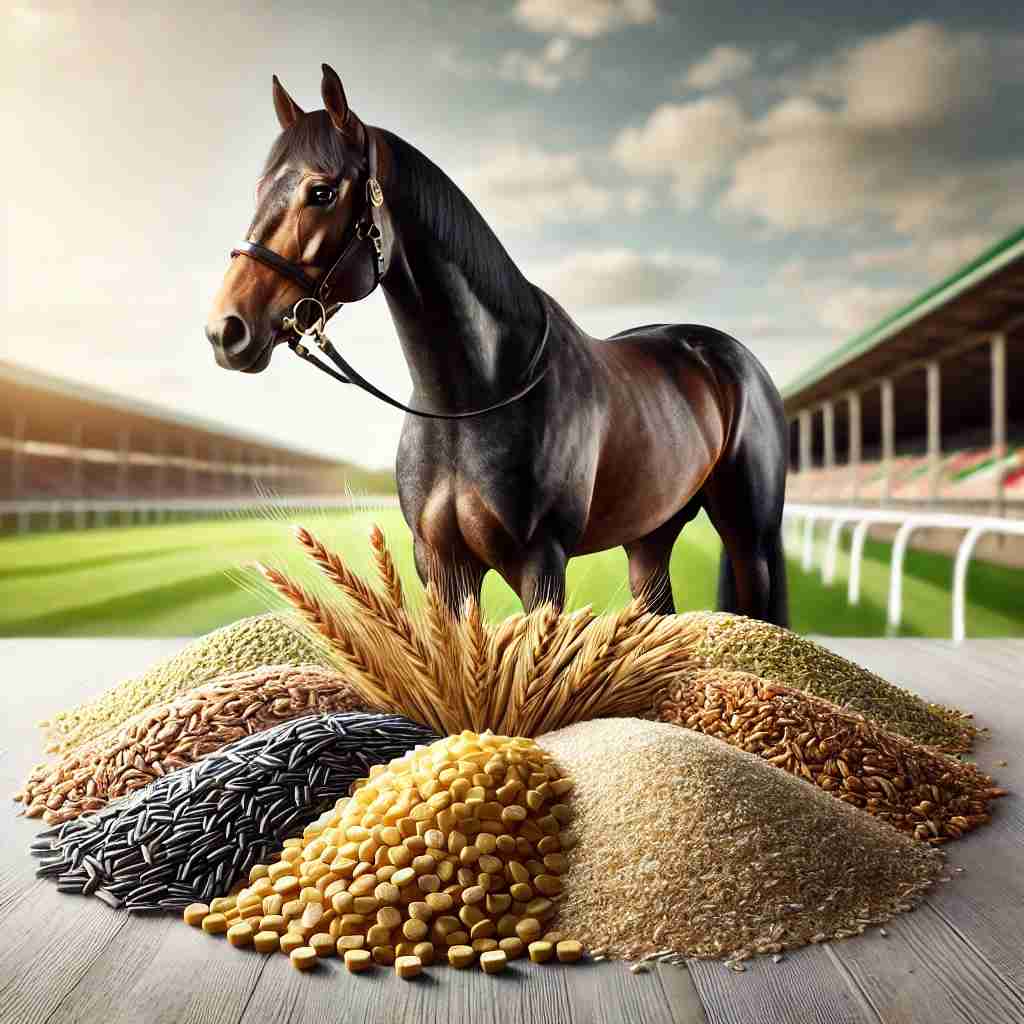
Because racehorses exert immense energy, they require additional calories beyond what forage can provide. Concentrates, particularly grains like oats, barley, and corn, are energy•dense and essential for fueling a racehorse’s high•intensity exercise.
Tips:
• Introduce grains gradually to avoid digestive upset and colic.
• High•performance horses may consume 0.5•1% of their body weight in concentrates daily, balanced with fiber and protein.
3. Protein for Muscle Development and Recovery
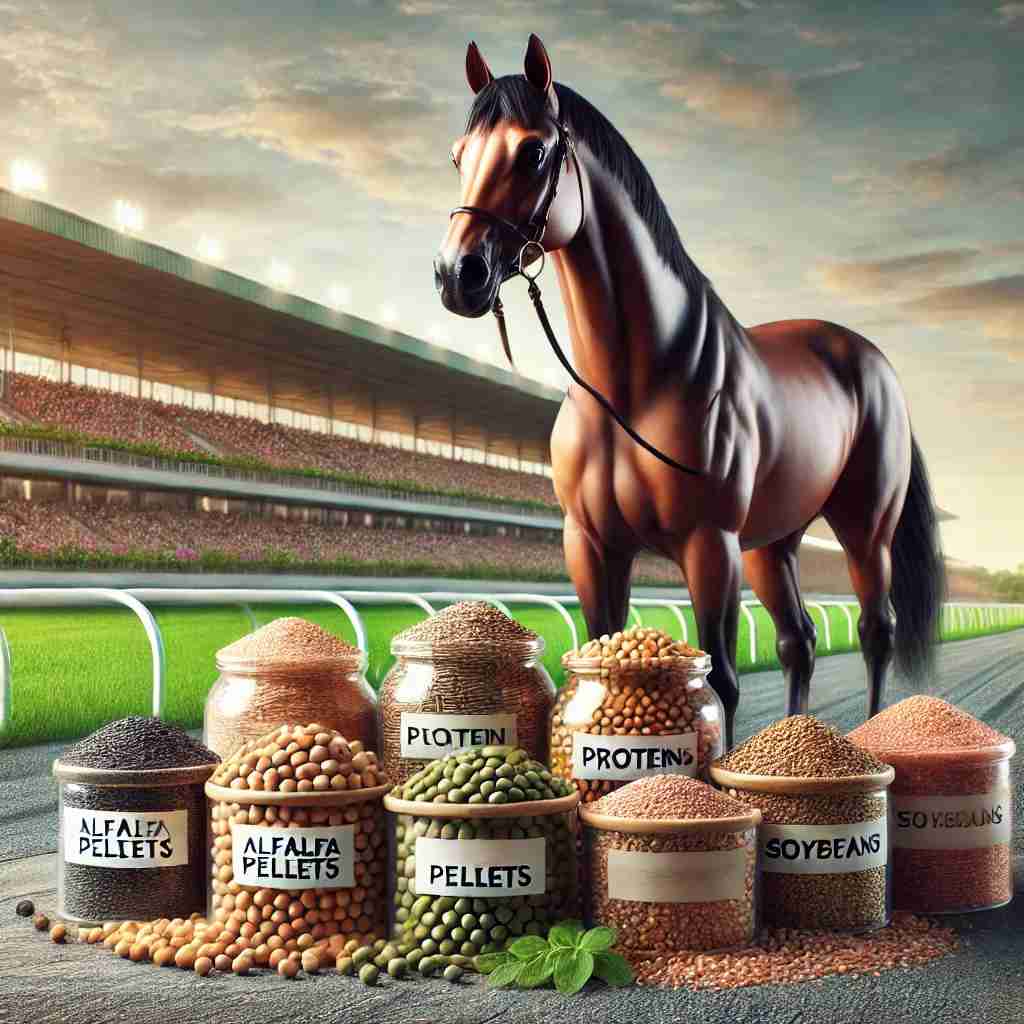
Protein is critical for muscle development, repair, and recovery, particularly in young or actively training racehorses. Alfalfa hay, soybean meal, and specially formulated commercial feeds offer good protein sources. The recommended protein content for a racehorse’s diet is around 10•14%, adjusted based on activity level and age.
Tips:
• Avoid excessively high protein diets to prevent kidney strain and metabolic issues.
• Aim for a balanced amino acid profile, particularly lysine, which is crucial for muscle repair.
4. Electrolytes and Hydration
Racehorses lose electrolytes rapidly through sweat, especially in hot conditions or during intense workouts. Replenishing sodium, potassium, calcium, and chloride is vital for muscle function, nerve signaling, and hydration. Adding electrolytes to feed or providing access to salt licks can help replace these critical minerals.
Tips:
• Offer clean, fresh water consistently and avoid sudden changes in water temperature.
• Provide electrolyte supplements after intense workouts or during high•heat periods.
5. Fat Supplements for Additional Calories
Fat is a highly digestible energy source that produces less metabolic heat compared to carbohydrates. Adding fats to a racehorse’s diet can improve endurance without increasing the risk of colic associated with high•starch diets. Common sources include vegetable oils, rice bran, and flaxseed.
Tips:
• Introduce fats gradually, up to 10% of the total diet.
• Monitor the horse’s coat and body condition to ensure optimal fat levels.
6. Vitamin and Mineral Supplements
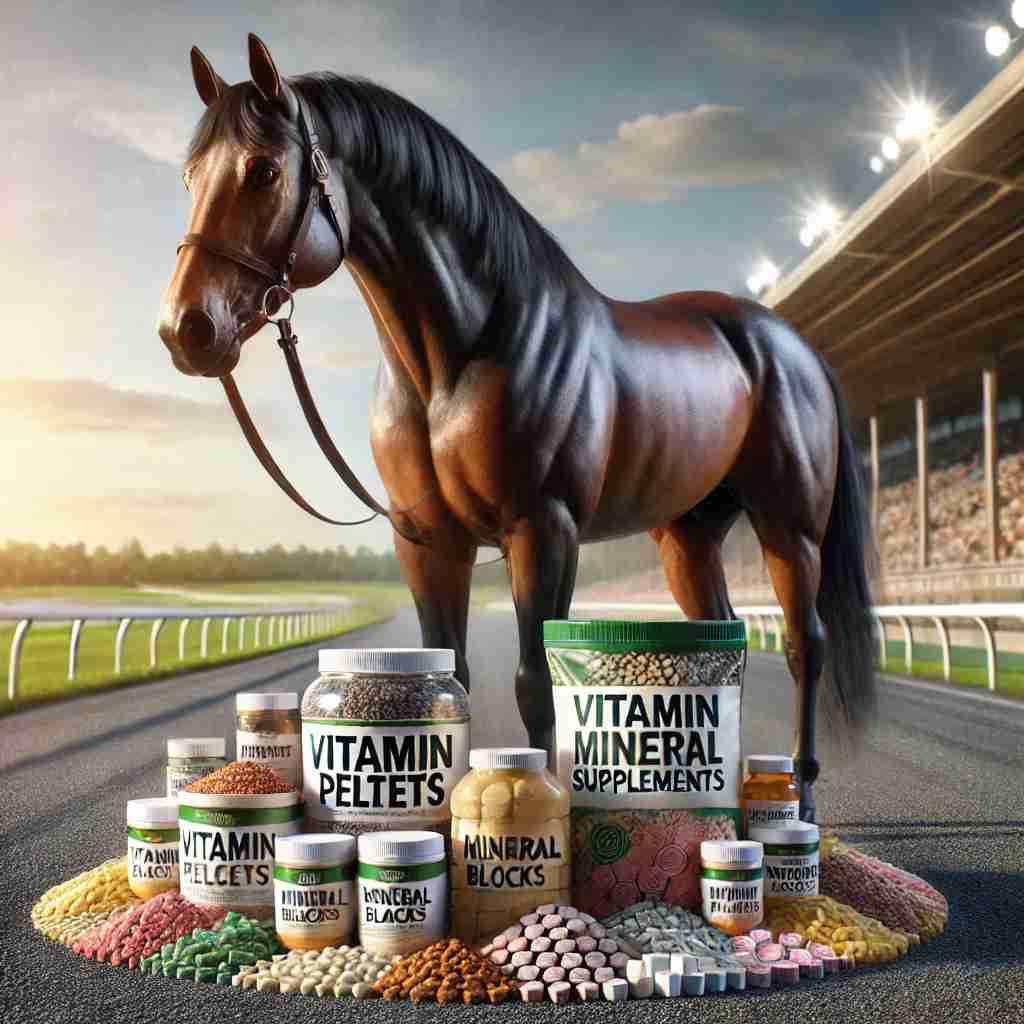
Racehorses have increased requirements for vitamins and minerals due to their intense physical activity. Common additions include:
• Vitamin E and selenium for antioxidant support.
• Calcium and phosphorus for bone health.
• B vitamins for energy metabolism.
Many commercial feed products for performance horses are formulated to meet these needs, but customized supplementation may be necessary for individual horses.
Tips:
• Work with an equine nutritionist to avoid imbalances.
• Ensure supplements are fresh, as certain vitamins degrade over time.
7. Establishing a Consistent Feeding Schedule
Horses thrive on routine, so it’s essential to feed them at the same times each day. Divide concentrate feedings into smaller meals throughout the day to reduce the risk of colic and digestive issues. Feeding practices that allow for grazing or small, frequent meals mimic a horse’s natural eating habits and promote better nutrient absorption.
Tips:
• Avoid feeding large grain meals close to race time.
• Offer smaller, more frequent meals for better digestion and energy utilization.
8. Regular Monitoring and Adjustment
Each racehorse is unique, with varying needs based on metabolism, training intensity, age, and health. Regular monitoring of body weight, coat condition, and energy levels helps in making dietary adjustments. Working closely with a veterinarian and equine nutritionist ensures that the diet evolves with the horse’s changing needs.
A good nutritional regimen for racehorses focuses on balancing energy sources with digestive health, maintaining hydration, and supporting muscle recovery. While the foundation of a racehorse’s diet is high•quality forage, concentrates, protein, and supplements are essential to meet the specific demands of racing. By prioritizing tailored nutrition, horse owners can help their racehorses reach their full athletic potential while promoting long•term health and well•being.

